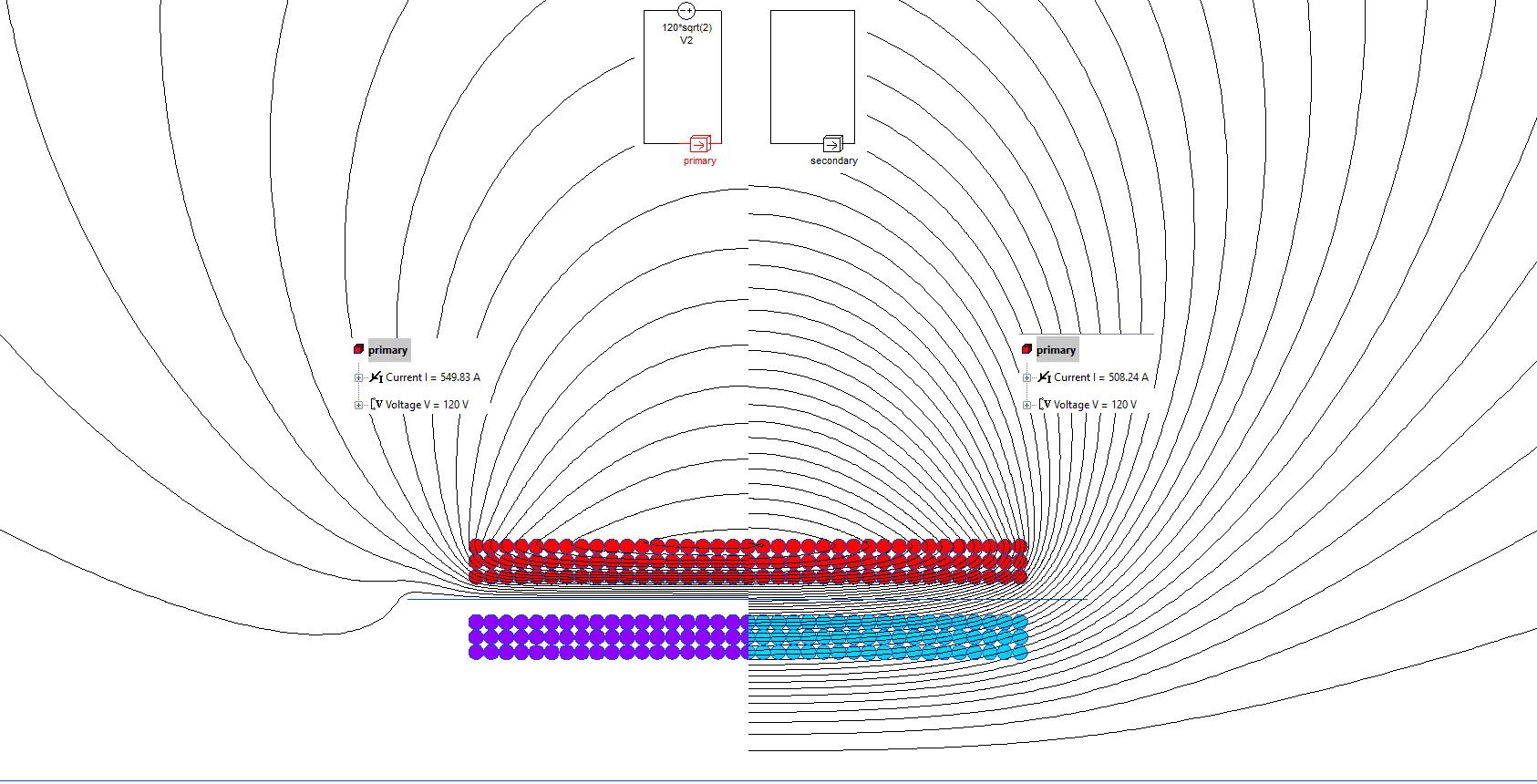Inductive fault current limiter
QuickField simulation example
This simulation example is prepared by Professor James R. Claycomb as a part of the webinar Fault Current Limiter Simulations using QuickField.
An inductive superconducting current limiter utilizes the fact that a superconductor becomes a normal conductor at some critical value of magnetic flux density. Below the critical value the superconductor effectively screens the secondary winding. When the fault occurs, the current increases many times and its magnetic field causes the superconductor to come to a normal state.
Problem Type
Axisymmetric problem of AC magnetics.
Geometry
Given
Conductor diameter is 1 mm, copper conductivity 59.6 MS/m.
Voltage source 120 V (r.m.s.), frequency 60 Hz.
Task
Calculate the fault current.
Solution
Superconductor layer is modelled as an infinitively thin layer with a zero magnetic potential boundary condition.
Results
A maximum possible fault current magnitude is 549 A. The fault current limiter reduces fault current magnitude to 508 A.
Left picture shows the case, when the superconductor is in the superconducting state and fully screens off the secondary winding. Right picture shows a case when the superconductor is in a normal state.

- Video: Inductive fault current limiter. Watch on Youtube
- Download simulation files (files may be viewed using any QuickField Edition).